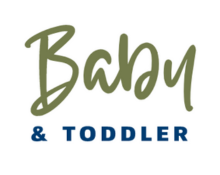
Inverted nipples can present some challenges during breastfeeding, but with proper techniques and support, many women with inverted nipples are still able to breastfeed successfully. Here are some tips that may help:
Assess your nipples: Determine the degree of inversion of your nipples. There are different levels of nipple inversion, ranging from mild to severe. Mildly inverted nipples may become more everted as your breasts grow during pregnancy, while severely inverted nipples may require additional assistance.
Nipple stimulation: Gently stimulate your nipples to encourage them to protrude before latching your baby. You can use your fingers to roll or draw out the nipple, or try using a breast pump for a few minutes before breastfeeding.
Breast shells or nipple shields: Breast shells , nipple shields or nipple formers can be used to help draw out inverted nipples. These devices create gentle pressure and can help the nipple become more everted, making it easier for your baby to latch. Consult with a lactation consultant or healthcare provider for guidance on using these tools correctly.
Warm compresses: Apply a warm compress to your breasts before breastfeeding. This can help relax the breast tissue and make it easier for your baby to latch onto the nipple.
Breastfeeding positions: Experiment with different breastfeeding positions to find the one that works best for you and your baby. Positions that promote good latch and allow your baby to take more of the breast into their mouth, such as the football hold or side-lying position, may be helpful for latching onto inverted nipples.
Seek assistance from a lactation consultant: A lactation consultant can provide expert guidance and support tailored to your specific situation. They can assess your baby’s latch, offer advice on breastfeeding techniques, and provide additional strategies for successful breastfeeding with inverted nipples.
Pumping and supplementary feeding: In some cases, pumping breast milk and offering it to your baby using an alternative feeding method, may be necessary. This can help ensure that your baby receives the benefits of breast milk while you work on improving the latch and overcoming any challenges with inverted nipples.
Remember, every breastfeeding journey is unique, and it may take some time and experimentation to find the strategies that work best for you and your baby. Be patient and seek support from a healthcare professional or breastfeeding specialist if needed. With persistence and support, many women with inverted nipples can successfully breastfeed their babies.
